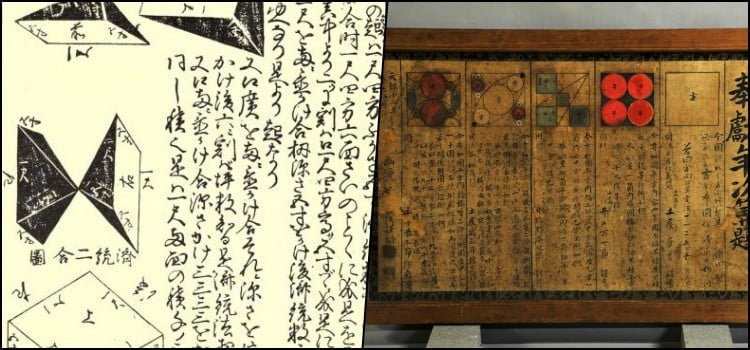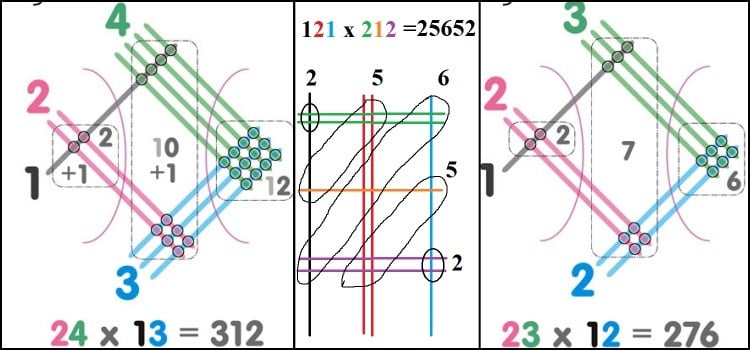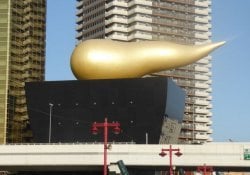The Japanese have a different writing from the western one and also several different cultural issues. Many end up wondering how mathematics works in Japan, thinking about that we are writing this article. Mathematics in Japanese is called Suugaku (数学) and there are two of them in Japanese, the western one is called yousan (洋算) and the Japanese way of wasan (和算).
Japanese also has its own numbers using ideograms, only they also use western numbers. The great truth is that Japanese numbers and counts are much more logical and systematic than Western ones. We recommend that you already have knowledge of or about Japanese numbers so as not to get lost in Japanese mathematics.
Wasan - The origin of mathematics in Japan
Wasan was developed in Japan during the Edo period (1603-1867), the term wasan literally means Japanese calculus (算) (和). It was coined in the 1870s but is unfortunately in decline because of the influence of Western mathematics. There are not so many differences between Japanese and Western mathematics, it's just historical, but in practice the mathematics is always the same.
Among the history of mathematics in Japan one of the proudest inventions is the soroban or japanese abacus. There are also Sangaku which are mathematical puzzles that were placed in temples and shrines to challenge people. Seki Kowa was the most influential Japanese mathematician before contact with the West. He discovered solutions for solving systems of linear equations by eliminating dependent variables.
The difference between Japanese and Western mathematics is that they have not applied much of their research and discoveries to areas other than geometry. So they ended up adopting Western mathematics.
multiplication trick
The Japanese have a method to perform multiplications more easily. It consists of drawing sets of parallel lines that represent each digit of the first number to multiply. And then draw sets of parallels, perpendicular to the first sets of parallels, corresponding to each digit of the second number (the multiplier). Look at the figure and count the number of encounters of the parallel lines:
I can't explain it well in words, but each alignment of the parallel lines represents a digit of the final result. And just like in traditional multiplication, it's better to get the result by counting the numbers starting from behind. Look at one of the examples in the figure written in calculations to see how this method is simpler than the traditional one: 23 x 12 = (2x10 + 3)(1x10 + 2) = 2x1x102 + [2x2x10 + 3x1x10] + 3x2 = 276
How do the Japanese do calculations?
Mathematics in Japan is done in the same way as in the West. Even Japanese children are already introduced to the Arabic numbers we use, but they also use the ideograms. One of the few things that changes is the pronunciation in Japanese, if you know English it's easy because they use a lot of variations of English.
We use the same mathematical symbols in Japanese as in Western mathematics. However, Japanese also uses verbs like "add" and "multiply" along with Japanese ideograms. add as an addition verb, to add or more. Example: 7 + 3 = 10 / nana tasu san wa juu desu (七足す三は十です). In Japanese we use the desu (です) to speak the equal (=) for example: (X + Y = 50) in Japanese we would say X + Y equals 50.And we use the word dez to refer to the (. and,) of decimal numbers. Example: 3,5 (san ten go)
In Japanese we can also use the English variation of the 4 mathematical operations (kangenjojo – 加減乗除). They are the same as in English. Below is a list of their pronunciation:
| Japanese | Derived from English | |
| addition / more | add | purasu (プラス) |
| subtraction / minus | hiku (引く) | mainasu |
| multiplication / times | kakeru | |
| division / divided | waru (割る) | |
| Fractions | bun |
The verbs add, subtract, multiply and divide followed by zan (算) is used to say addition, subtraction, division, etc.引き算 (hikizan), 掛け算 (kakezan), 割り算 (warizan),
Japanese math vocabulary
Of course this is just the basics of Japanese math. For you to delve deeper, we will leave you a vocabulary table for you to carry out your research:
| Portuguese | Japanese | Romaji |
|---|---|---|
| Math | 数学 | suugaku |
| Number | 数字 / 数 | suuji / kazu |
| Digit | 桁 | keta |
| Decimal | 小数 | shousuu |
| Fraction | 分数 | bunsuu |
| Divider | 約数 | yakusuu |
| Exponent | 指数 | shisuu |
| Even number | 偶数 | guusuu |
| Odd number | 奇数 | kisuu |
| irrational number | 無理数 | murisuu |
| rational number | 有理数 | yuurisuu |
| Reason | 比 | oi |
| The amount | 量 | ryou |
| Volume | 体積 | taiseki |
| Area | 面積 | menseki |
| Angle | 角度 | kakudo |
| Length | 長さ | nagasa |
| Weight | 重さ | omosa |
| Speed | 速さ | hayasa |
| Prime number | 素数 | sosuu |
| negative number | 負の数 | I went in the sweat |
| positive number | 正の数 | I don't know |
| Calculation | 微積分学 | bisekibungaku |
| Differential calculation | 微分学 | bibungaku |
| Integral Calculus | 積分学 | sekibungaku |
| Multivariate Calculus | 多変数微分積分学 | tahensuubibunsekibungaku |
| Fractions | 分数 | bunsuu |
| Trigonometry | 三角法 | sankakuhou |
| Probability | 確率 | kakuritsu |
| Statistics | 統計 | toukei |
| Geometry | 幾何学 | kikagaku |
| Algebra | 代数学 | daisugaku |
| Linear algebra | 線型代数学 | senkeidaisuugaku |
| Differential Geometry | 微分幾何学 | binbukikagaku |
| Square | 正方形 | seihoukei |
| Triangle | 三角形 | sankakukei |
| Rectangle | 長方形 | chouhoukei |
| trapeze | 台形 | daikei |
| parallelogram | 平行四辺形 | heikoushihenkei |
| Diamond | 菱形 | hishigata |
| Kite | 凧形 | takogata |
| Cube | 立方体 | rippoutai |
| Pyramid | 角錐 | kakusei |
| square pyramid | 四角錐 | shikakusei |
| Prism | 角柱 | kakuchuu |
| triangular prism | 三角柱 | sankakuchuu |







